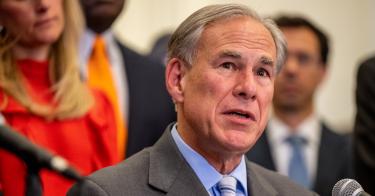For Texas lawmakers, it’s a time for choosing.
Governor Greg Abbott’s education-choice proposal has passed the Texas senate, but it is in jeopardy in the house, where several rural Republican legislators have balked.
Abbott’s proposal would create K–12 education savings accounts (ESAs) that would allow families to choose the learning environments that work best for their children. With ESAs, Texas families would receive about $8,000 per K–12 student annually to pay for private-school tuition, tutoring, textbooks, online courses, special-needs therapy, and numerous other educational expenses.
The concept of education choice is very popular among Texas voters. In a recent Morning Consult poll, seven in ten Texans said they support ESAs. Support among parents of school-aged children was even higher, at 76 percent. In last year’s GOP primary, 88 percent of voters supported a ballot proposition declaring that “Texas parents and guardians should have the right to select schools, whether public or private, for their children, and the funding should follow the student.” Some of the highest levels of support came from the most rural counties in Texas.
>>> South Carolina’s Education Savings Accounts a Love Letter to the Next Generation
Nevertheless, critics are concerned that school-choice policies wouldn’t benefit rural areas. For example, the Texas Association of School Boards claims that for rural families, “options other than their local public schools are few and far between.” If so, then they might have nothing to gain. But they’d also have nothing to lose.
In any case, the reality is that private-education options are much more common in rural areas than commonly thought. A study by the Brookings Institution has found that about seven in ten rural families live within ten miles of a private elementary school. Indeed, according to the National Center for Education Statistics, about 10 percent of both urban and rural students attend private schools.
That leads to the critics’ second objection (which contradicts the first): that given the choice, many rural parents would opt for private schooling for their children, causing a mass exodus from and the destruction of rural public schools. However, as we documented in a recent report for the Heritage Foundation, states with expansive school-choice policies, such as Arizona and Florida, have simultaneously witnessed an increase in rural private-school enrollment and an improvement in public-school performance.
Arizona has long had the most robust education-choice environment in the nation. If the critics were right, then Arizona’s rural public schools should have been decimated. Instead, Arizona’s rural schools have been outperforming rural schools nationwide. From 2007 to 2019, Arizona rural students’ fourth- and eighth-grade reading and math scores on the National Assessment for Educational Progress (NAEP) increased by a combined 21 points, while average scores in rural schools nationwide decreased by two points. On the most recent, post-pandemic NAEP, Arizona’s rural students were still up a combined eight points, while rural students nationally dropped 17 points from 2007.
>>> Empower Parents to Make Education Choices
When parents have more schooling options, schools must compete to attract them. Texas lawmakers should keep in mind that states also compete to attract new residents. If Texas fails to enact a school-choice policy, it will lose its competitive edge.
In recent years, Texas has done well in attracting new residents—but the Sunshine State has outshined it. Between 2021 and 2022, Texas had a net population inflow of 350,000 people, but this was good only for a distant second place: Florida had added 440,000 new residents. Similarly, as the Wall Street Journal recently documented, Texas attracted a net $10.9 billion from domestic migration in 2021, but Florida gained $39.2 billion. Long popular with businesses and retirees, Florida has positioned itself as the premier destination for young families.
Other states are following Arizona’s and Florida’s lead. Six states now offer education choice to all K–12 students, and several more, such as North Carolina and Oklahoma, are poised to follow suit. With these states offering families a robust menu of education options, the Lone Star State will need more than a nice climate and low taxes to remain competitive.
Texas lawmakers should choose wisely.
This piece originally appeared in the National Review




